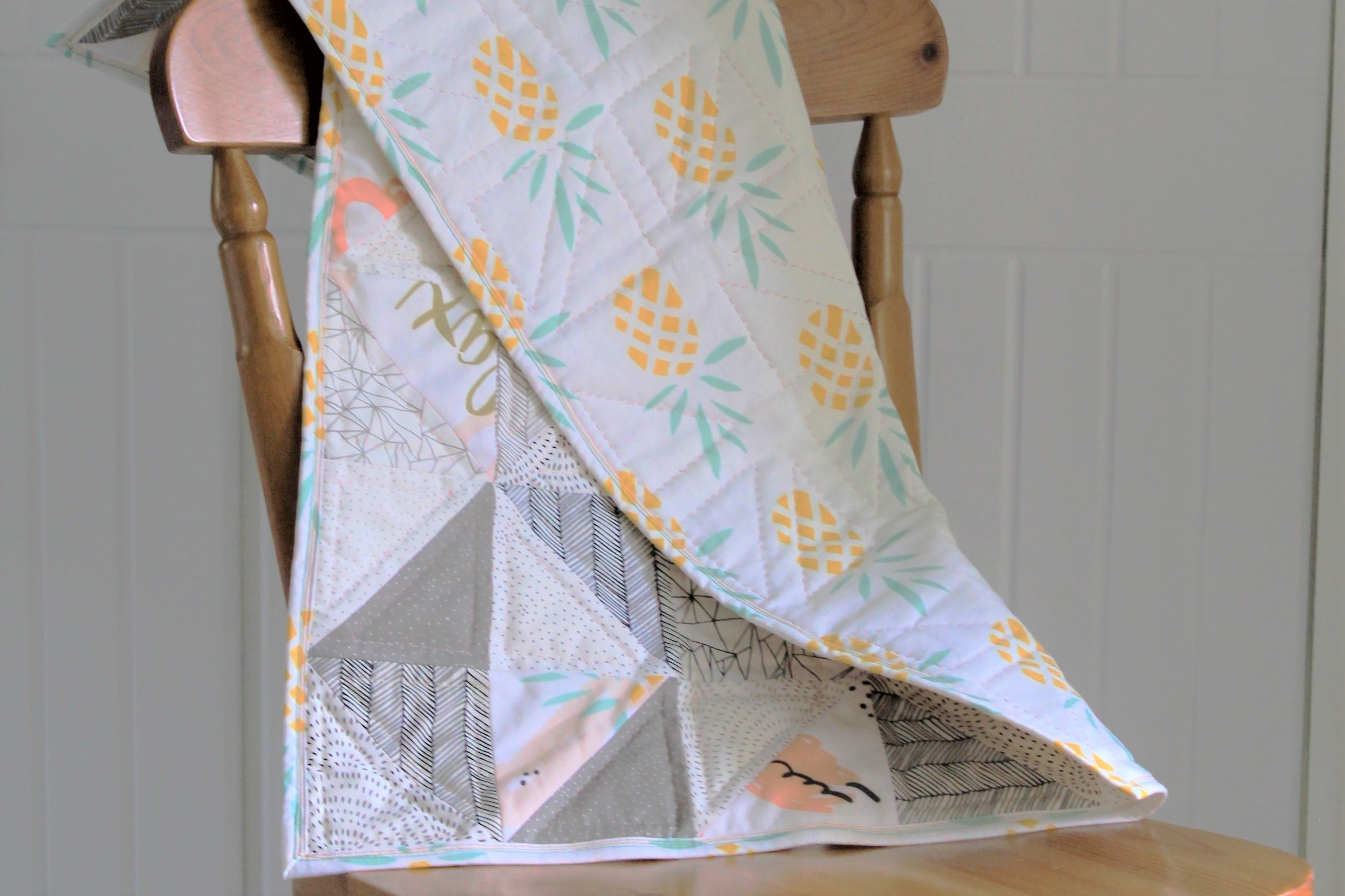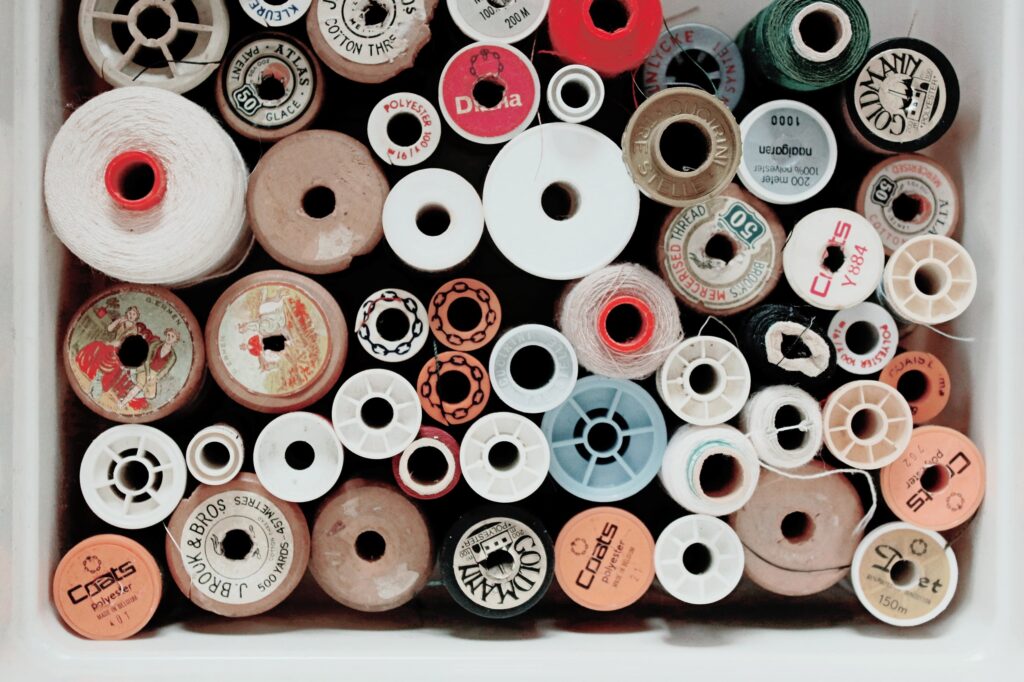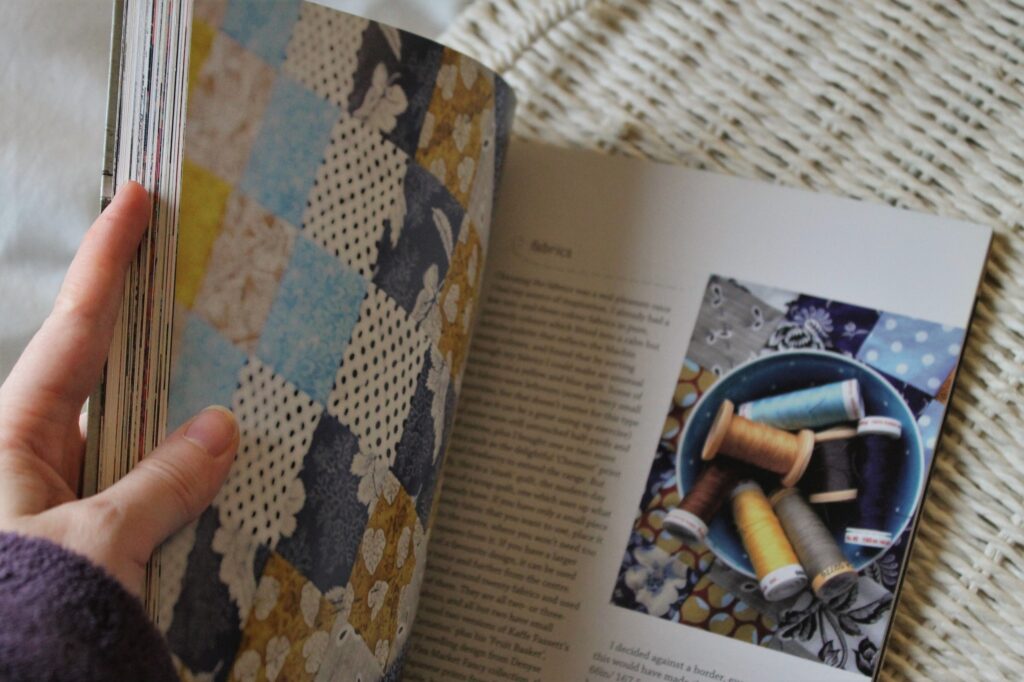
A Quick Quilting Beginner Guide

My quilting beginner guide is the perfect starting place for anyone who wants to learn how to quilt. These comfy homemade blankets are made from three pieces: a detailed patchwork front piece, a stuffing material, and a large backpiece. Stitched together with a little binding around the edge, they make wonderful gifts, heirlooms, or just projects to work on.
Even if you have never used a sewing machine before, you can make quilts very easily. In fact, you don’t even need to buy a sewing machine. Hand sewing a quilt is very popular – read more about how to start in my article How to Start Quilting by Hand.
Let’s get started.
Is Quilting Beginner Friendly?
The great thing about quilts is that they can be as simple or complex as you like. And, unlike many other crafts projects, undoing mistakes is blissfully easy – just unpick your stitches and try again.
Another thing that I love about quilts is that any mistakes, mismatching fabrics or wonky stitches just add to that homemade charm. I often think that if a quilt is made 100% perfectly, you might as well just buy a blanket from a store instead.
Quilting is a chance to slow down, work with your hands, and create something a bit artistic. Once you’ve finished your quilt, you can use it at home, when travelling or even give it as a gift. Despite the size of the project (which I admit can be a bit overwhelming), quilting is perfect for beginners.
What to Expect
There are a few misconceptions about quilting. The first is that you need to be an experienced grandma with a more than a few sewing projects under your belt. This is just plain wrong and many modern quilts are easy to make.
The other misconception is that quilting is an expensive hobby. Again, this is wrong. You can make quilts from old clothing, fabric scraps, old bed sheets, stained tea-towels, and any other fabric you have laying around.
I have some tips for buying padding and backing fabrics on a budget too – find these below.
Other things to expect:
- An element of planning – If you are following a pattern or need a particular size quilt, you will need time to carefully plan out how much fabric you need, how to cut it, and how to sew it. You can also make ‘crazy quilts’ or quilt as you go, to remove that planning element.
- You will need space – When you want to quilt, you will need to take out all your fabric and move it around. This requires space. If you don’t have a tabletop, use the floor or take the comforter off your bed to use the mattress as a flat surface.
- You will need time – Some lap quilts can be made in a weekend, but most will take several weekends to create. Once you get into the groove, you can work on your quilt for hours at a time.
- Being organised pays off – Having all your fabric organised, a dedicated space to quilt, and a system for packing away your quilting items will remove a lot of frustration from the entire process.
Quilting Equipment

To make a quilt, you don’t need lots of fancy equipment. The history of quilting dates all the way back to Ancient Egypt around 3400 BC, when they didn’t have electric sewing machines and special threads.
Here’s a list of basic equipment you need:
- A needle (any will do, but if you need to buy a new one then opt for a quilting needle),
- Thread,
- Fabric,
- Pins,
- Measuring tool (ideally a quilting ruler),
- Cutting tool (normal scissors will work but fabric scissors are preferable).
And here are a few additional items that will really help you but aren’t essential:
- A sewing machine,
- Rotary cutter and cutting board (I like this set),
- Iron and ironing board,
- Chalk or fabric pens.
Learning Quilting Techniques for Beginners
To make a basic quilt, you only need to know two sewing techniques. First, how to tie a knot at the end of your thread. Second, how to do a basic running stitch. And that’s it!
Use this stitch to sew pieces of fabric together, then use the stitch again to sew your quilt top to the middle and backing.
You can learn to use this stitch by hand. My recommended guide is by Pastel Craft Café, as they show how to use the running stitch to sew two pieces of fabric together. Practice this stitch on two spare pieces of fabric before you start.
You might want to learn other techniques, like creating neat corners and bias binding for the edges of the quilt, but these aren’t essential. You can check my quilting guide (link at the end of this article) for more help with these techniques.
Cheap Quilting Fabrics for Beginners
While you certainly can buy quilting fabric from dedicated stores – I like to find fat quarter packs on Etsy – you don’t need to spend much money to make a quilt. There are a few ways to keep the cost down for quilting fabrics:
- Use old clothing and scrap fabrics for the front,
- Shop at the thrift store or charity shop for extra fabric,
- Use an old blanket as the padding fabric,
- Buy cheap bed sheets off Amazon for the large backing piece,
- Wrap the backing piece over the edges instead of using a binding strip.
Another option that you might want to consider is buying a very thick backing fabric. A fleece fabric is thick enough that you can skip the padding entirely, and just stitch your beautiful patchwork piece to a large square of fleece fabric and create binding on the edges.
Note: stitching with different fabrics (e.g. thin cotton, elasticated, polyester, silk, wool, fleece) can be tricky with a sewing machine. Different threads and fabric weights can lead to mismatched corners and weird stretching. The easy way around this is to stitch the entire quilt by hand, or by only selecting one fabric type from the start.
Books That Cover How to Quilt for Beginners

You do not need to purchase a book to make a quilt. In fact, there are hundreds of free quilting patterns online that you can search for. However, I do find that having a quilting book is advantageous. It is easier to reference than an online article and most also have tips and tricks on cutting fabric, assembling a quilt, and diagrams to take you through some intermediate techniques (e.g., mitred corners).
My top recommendations for beginner quilting books are:
- Little Bits Quilting Bee by Kathreen Ricketson
- Urban Quilting by Wendy Chow
- The Gentle Art of Quilt-Making by Jane Brocket
Find more books that I recommend in my article 7 Quilting Books Worth Reading.
Learn Quilting, Step by Step
Okay, now that you have an idea of what you need to get started, let’s dig in. Here at Immortal Wordsmith, I have published several step-by-step article guides that will help you make your very first quilt. It is a simple square patchwork quilt that you can make with 90 squares of fabric – any size!
This guide will take you through how to make the quilt, step by step, with pictures. It is designed for beginners and will build your confidence as you go.
Read A Beginners Guide to Quilting Part 1 to jump in.